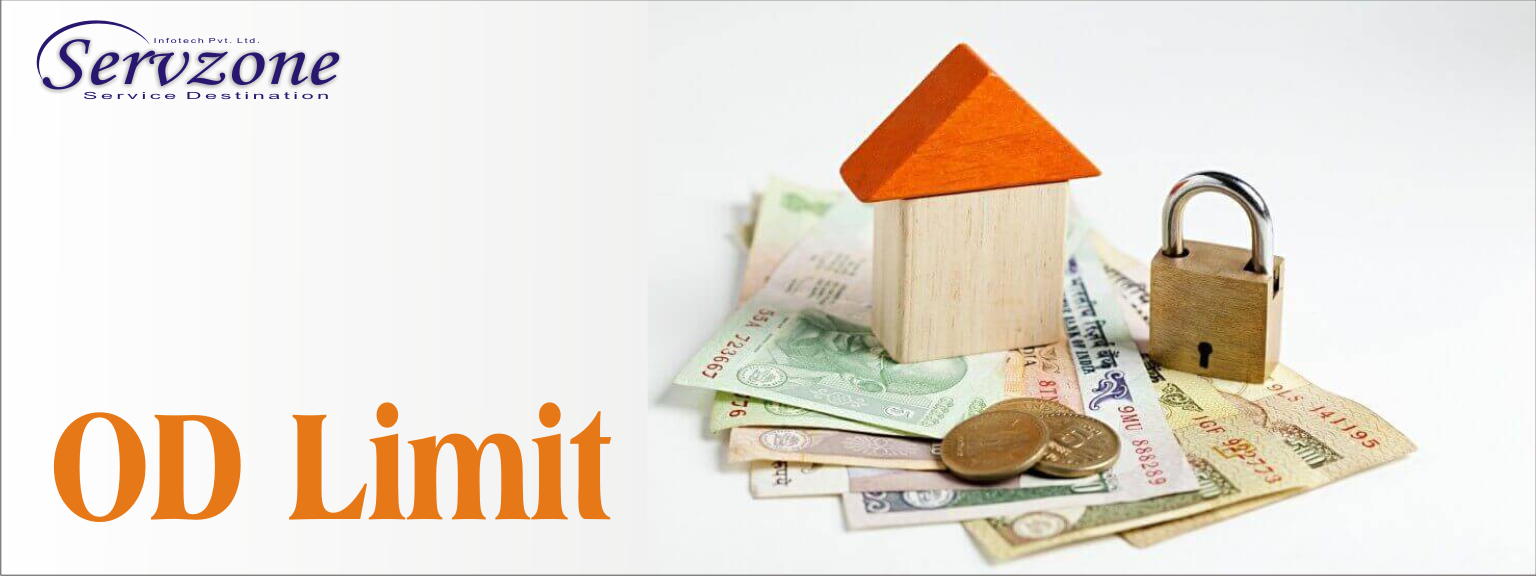Get Started With
servzone
Overview
Overdraft is a financial instrument in which the money can still be withdrawn from the current or savings account, even if the account balance goes below zero. It is a type of extension of monetary limit offered by banks and that money is said to be ‘overdrawn’. An authorized overdraft limit is assigned for each customer depending on their relationship with the bank. The customer can withdraw money up till the assigned limit. Banks do charge interest rate on the money withdrawn in form of overdraft.
Interest Rates
The interest rate on overdraft facility offered by private and public sector banks shall vary from lender to lender and depends on required loan amount, repayment tenure and relationship with the respective bank or financial institution.
Key Features
- Overdraft account is a facility that can be availed by maintaining any bank account
- Several private sector banks are now offering this facility for both salary and savings account holders
- The money extension is granted on the basis of customer’s account value, repayment history or credit score
- It is short-term credit provided by the bank that needs to be paid within the stipulated time limit
- Credit amount or overdraft attracts interest for the time of use which can be from a couple of days to a few weeks
- Repayment tenure is decided by the bank and it has full authority over the account and its use
- As per the RBI regulations, current accounts and cash credit accounts are eligible for a maximum of Rs. 50,000 per week
Overdraft is a significantly useful feature provided by the banks, as it offers aid to businesses in terms of cash flow to meet their working capital expenditure. Businesses often have to wait for In today’s banking system, numerous banks provide overdraft facility in basic savings and salary accounts. However, this facility is not offered to everyone. Only the customers having a good reputation in terms of repayment habits and good credit score are eligible for this facility. Moreover, the overdraft facility requires a certain annual fee and customers have the right to discontinue the service whenever they want.
pros and cons
Below mentioned are the pros and cons of Overdraft
| Pros | Cons |
| Helps in managing cash flow of business | Higher interest rate |
| Fulfils urgent cash crunch requirements | Offered only to bank account holders |
| Interest is paid only on utilized amount | Sanctioned limit depends upon applicant’s financials |
| Short-term borrowing – revises every year | Can be withdrawn at short-notice |
| Less paperwork | Interest charges changes as per changes in interest rates |
| No collateral required by banks | Not suitable for long-term finance |
| Flexible use of cash in small portions | Can be recalled on demand |
Eligibility Criteria
Different Types of overdraft accounts have diverse eligibility criteria for the facility and some of those norms are mentioned here:
1. Overdraft against Salary
Salary accounts opened by the businesses for their employees are eligible for this facility. The minimum requirement for availing overdraft facility in a salary account are to have regular monthly salary credit by the company and the company being in the approval list of the bank.
Features:
- Banks offer overdraft up to 3 times of current salary of the customer
- The facility is offered at minimal documentation and easy-repay feature
- Customers are required to pay interest only on the utilised amount with the freedom to repay the amount anytime without pre-closure charges
- The minimum salary limit varies from Rs. 15,000 to Rs. 25,000 according to specific banks
- This type of overdraft does not require any security or collateral
- Some banks even offer overdraft amount of up to Rs. 4 lakh
2. Overdraft on Savings Account
Despite being a relatively new concept in the country, overdraft on saving account has become quite popular due to being backed by the government. All the savings accounts opened under Pradhan Mantri Jan Dhan Yojna are eligible for an overdraft of Rs. 5,000 or 4 times monthly accent balance (whichever is lower). The accounts must be satisfactorily operated for a period of 6 months to avail this facility and only one member of a family is eligible for it. The facility is granted to the earning member of the family, preferably women. The account must be linked with Aadhaar card. This is another compulsory criterion to avail the facility.
The account holder must have another savings account for compliance with the RBI directive as well. Minors and KCC (Kisan Credit Card) individuals are not eligible for the scheme. There is also a renewal fee associated to the facility. However, the interest rate cannot exceed 2% above the base rate. This facility does not attract any processing fee.
Another good example of overdraft on saving account is Citibank Suvidha Savings Account. This is a form of instant cash credit which allows you to get instant money up to Rs. 5 lakh. The bank fixes the minimum EMI amount along with the interest rate. However, the customer can choose to increase the amount of EMI as per his/her convenience at any time. This scheme does not include a prepayment fee.
3. Overdraft against Time Deposits
Time deposits, such as fixed deposits are also eligible for overdraft facility. However, not every bank provides this facility as this is subject to bank’s policy only. SBI, offers overdraft facility against time deposits. All the customers having single/joint time deposits such as TDR/STDR and RD including NRE/NRO/RFC in any of the SBI branches are eligible for this facility. Customers can also apply through Internet banking for TDR and STDR overdraft.
Let’s further discuss SBI Loan Against Time Deposit for your reference.
With Nil processing fee, the minimum amount overdraft is kept at Rs. 25,000 whereas the maximum amount is Rs. 5 crore. The value of the overdraft cannot exceed 90% of the value of time deposit. The interest rate is kept at 1% above the relative time deposit rate. The repayment period is scheduled as per the repayment capacity of the borrower and the amount of overdraft. Moreover, repayment period for TDR and STDR ranges from 3 years to 5 years. SBI does not charge any processing fee and prepayment charges as well. This type of overdraft is also called secured overdraft.
The overdraft interest rate is calculated by the method of average daily balance method in which the overdraft interest is calculated by considering the balance of a current account at the end of each day or tenure.
A bank overdraft is a credit line in which bank offers a borrowing limit that can be withdrawn even if your bank account balance is below zero."
The main difference between bank overdraft and bank loan is that in overdraft the interest rate is paid only on the utilized amount, whereas in bank loan you have to pay interest rate on the whole amount.
The interest on an overdraft varies from bank to bank and depends on applicant’s relationship with bank and his/her financial stability.
SBI offers overdraft facility against FDs of their customers. Customers having FDs under a single name can withdraw up to 90% of their FD’s amount. The money can be availed instantly online by the help of YONO app without visiting a bank branch.

GST Registration

PVT. LTD. Company

Loan

Insurance


